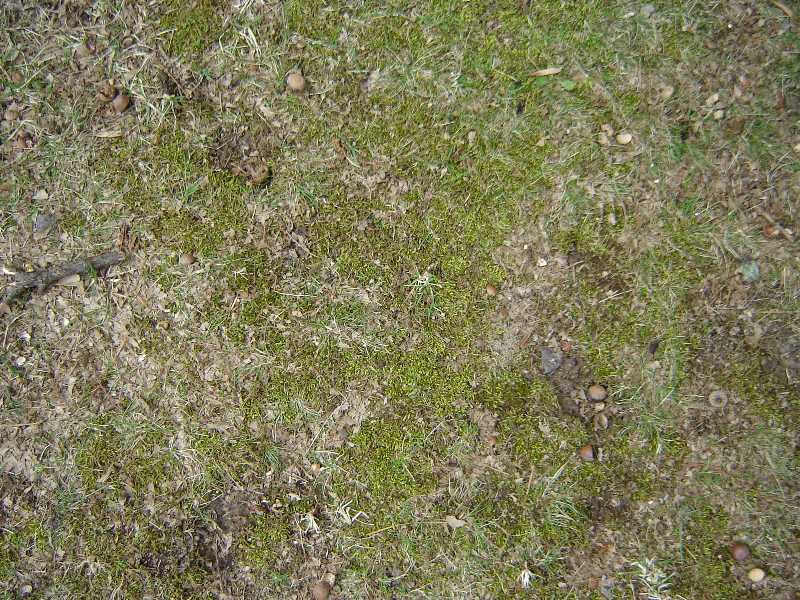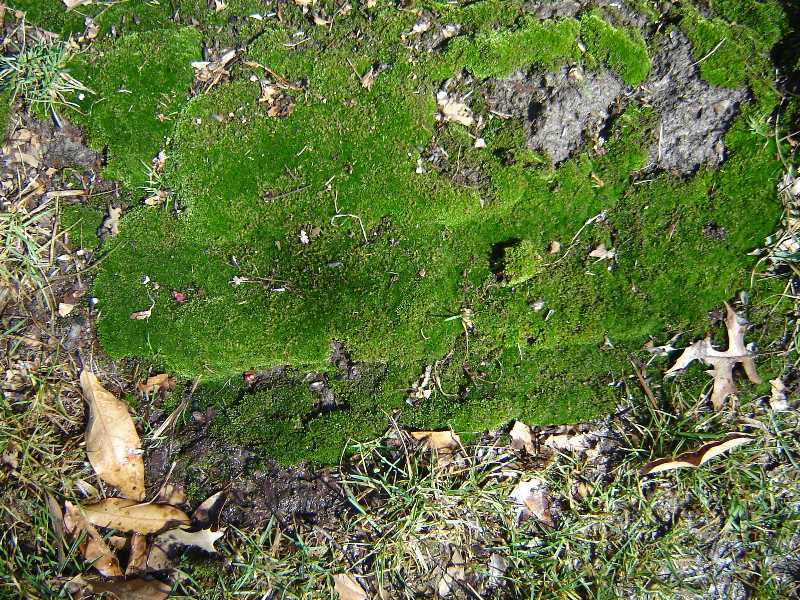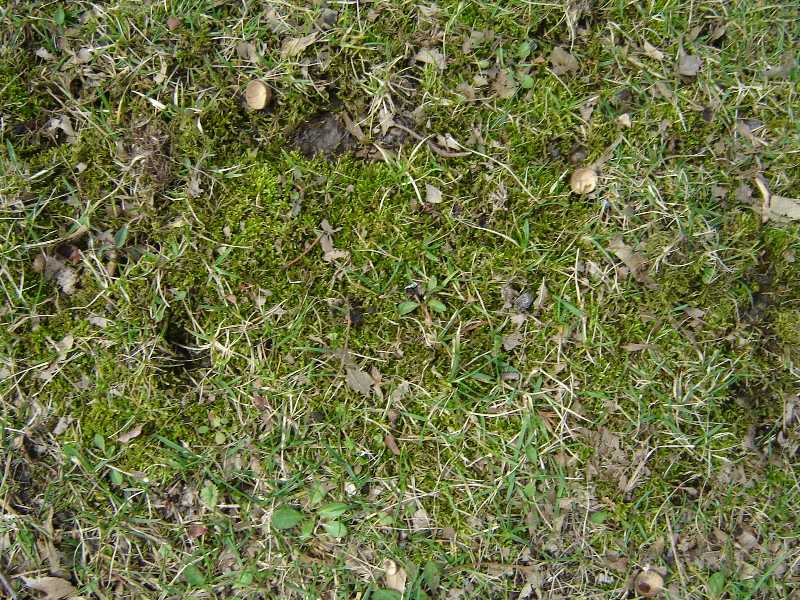 |
Moss in lawn
|
Mosses are small, primitive plants that have reduced leaves and a mass of fine, thread-like stems. A mild, wet winter combined with turfgrass which is thin and weak offers an opportunity for moss and/or algae growth.
Mosses are not parasitic on turfgrass. They produce their own food, grow where grass will not, and form a soft mat of growth, which makes a barrier, preventing grass from growing.
Shady conditions and infertile and/or compacted, poorly drained soil encourage moss growth.
Symptoms and Diagnosis
Moss in the lawn is quite visible and can be annoying. Large areas void of grass may be covered by moss. These small primitive plants have reduced leaves and reproduce by spores, not seeds.
Life Cycle
Moss prefers to grow and become established in the winter with growth peaking in early, wet springs. If grass is established in the fall, moss will fail to compete for space in which to grow. This presents the best strategy for avoiding moss development.
Integrated Pest Management Strategies
1. Cultural practices to inhibit moss growth and stimulate growth of desirable healthy lawn grass.
A. Test soil for pH and nutrient content. If deficient in nutrients, follow recommendations of soil test. Fertilize with nitrogen just before the growth cycle.
B. Improve drainage. In moist areas with poor drainage, add soil or contour the area to move water away from low lying areas.
C. Increase light penetration. Trim lower branches of shade trees and thin to improve light penetration to the soil surface and improve air circulation. A ground cover may be used in lieu of grass if shade is too intense.
D. Loosen compacted soils. Compacted soil should be tilled or core aerated to reduce compaction. Loosening the top 2 to 4 inches of soil will help. Cultivation breaks up the algae crust or moss mats.
2. Manual removal. Remove as much of the moss as possible by raking or dethatching.
3. Treatment.Treat the mossy areas with iron compounds; liquid ferric sulfate is the most effective. Fertilizers with iron compounds also work if very fine, near-dust formulations are used. Moss killers containing zinc sulfate will kill the moss but can also damage grass. Buy only products which state "for controlling moss in lawns" as some are for removal of moss in sidewalks and roofs and can be harmful to other plants. Lime and copper sulfate are ineffective in killing moss.
4. Turf selection. In shaded, well-drained soil, plant fine fescues. For shaded, moist areas, plant rough bluegrass. Neither grass, however, will survive extremely heavy shade or soil saturated for long periods.
5. Watering. Keep grass in good condition in the summer by watering deeply to establish deep roots. If an automatic watering system is used, water plentifully once or twice a week (1 inch per watering).
Organic Strategies
Strategies 1.B, 1.C, 1.D, 2, 4, and 5 are strictly organic approaches. Strategy 1.A could be considered an organic approach if an organic fertilizer is used.
More images
 |
Moss in lawn
|
|
 |
Moss in lawn
|
|